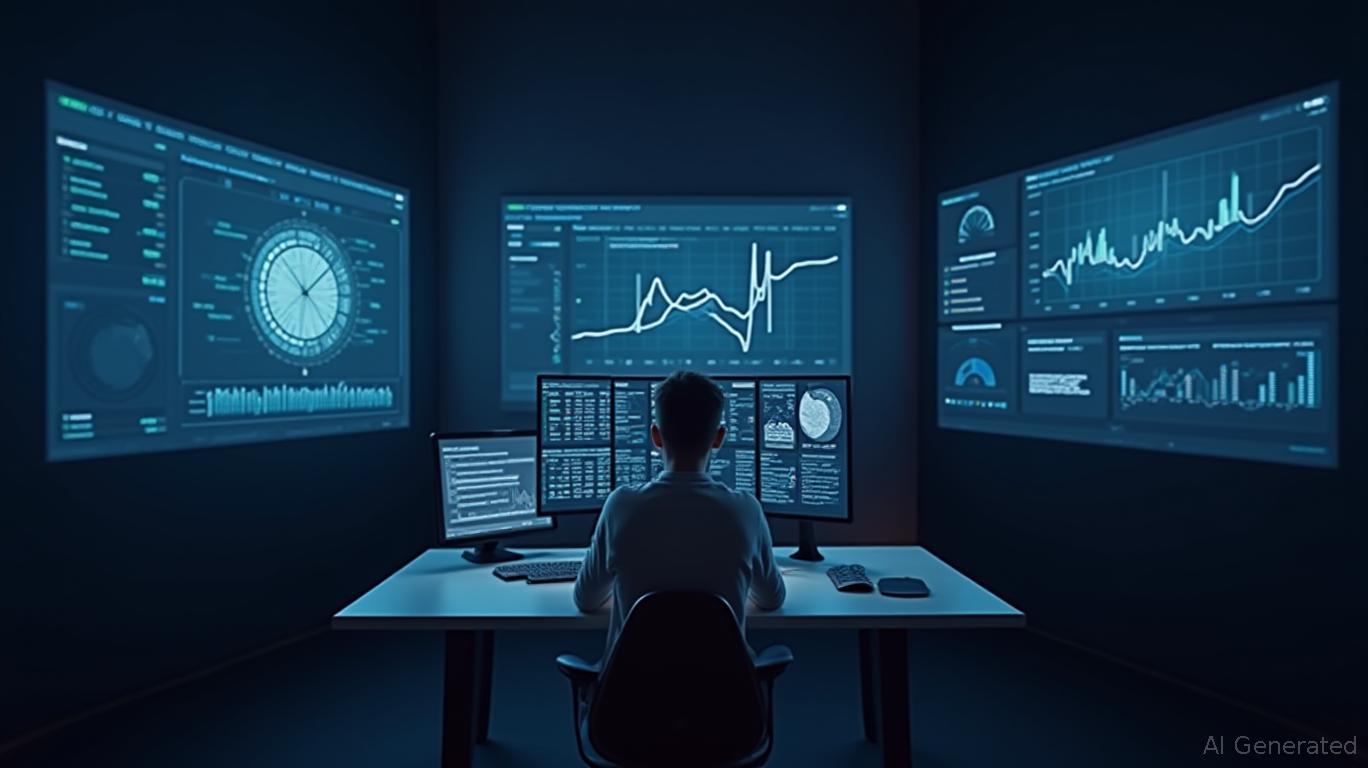AI-Driven Content Creation: The New Engine of the Creator Economy
The Forbes Top Creators 2025 list underscores a pivotal shift in the digital landscape: the creator economy is no longer just about raw talent or viral moments. It's now a high-tech, AI-optimized machine, where algorithms and automation are as critical as creativity itself. With top creators collectively earning $853 million this year—up 18.5% from 2024—their success is increasingly tied to tools like AI that streamline content production,
reach, and unlock new revenue streams. But this boom isn't without risks. Investors must weigh the explosive growth potential against looming challenges like content homogenization and regulatory hurdles. Here's why AI-creator synergies are the next big frontier—and how to bet on them.The AI-Content Nexus: How Creators Are Weaponizing Technology
The rise of AI tools like ChatGPT, DALL-E, and MidJourney is transforming the creator toolkit. Take MrBeast, the list's top earner at $85 million, whose empire now includes a reality game show on Amazon and a burger chain. His team uses AI to analyze viewer preferences, optimize video thumbnails, and even script ideas—accelerating content creation from concept to screen in days rather than weeks. Similarly, Mark Rober (#8) leverages AI to simulate STEM experiments, while Dani Austin (#31) uses it to refine affiliate marketing strategies for her haircare line, Divi.
The data is clear: AI isn't just a novelty. It's a productivity multiplier. According to Goldman Sachs, AI tools cut the “time-to-market” for content by 30–50%, while also reducing costs. This efficiency allows creators to experiment with new formats, like interactive videos or personalized recommendations, without burning out.

The Investment Case: Where to Play the AI-Content Trend
The winners here aren't just the creators themselves but the platforms and tools enabling this transformation. Consider:
1. AI-Content Tools: Companies like Adobe (ADBE) and Canva are integrating AI into their creative software, making it easier for creators to design graphics, edit videos, and generate copy. Adobe's Creative Cloud now includes AI-driven features like Auto-Enhance and Content-Aware Fill, which are critical for creators juggling multiple projects.
2. Social Media & Distribution Platforms: TikTok, YouTube, and Instagram are racing to embed AI into their recommendation algorithms. For instance, YouTube's AI now prioritizes “high-quality” content—defined by engagement metrics—giving creators using AI tools an edge.
3. AI Infrastructure Providers: The computational power behind AI tools requires cloud giants like Amazon (AMZN) and Alphabet (GOOGL), which offer scalable cloud services. These companies are the unsung heroes of the AI revolution, enabling creators to run complex algorithms without massive upfront costs.
Risks: When the Algorithm Eats Itself
The flip side? Over-reliance on AI could lead to content homogenization. If every creator uses the same tools to chase the same engagement metrics, the digital landscape risks becoming a sea of generic, algorithm-optimized content. Already, critics argue that TikTok's AI-driven “For You” page prioritizes sensationalism over depth, creating a feedback loop of short-form, clickbait-driven videos.
Then there's regulatory risk. As AI-generated content blurs the lines between human and machine creation, policymakers are eyeing stricter rules. The EU's proposed AI Act, for instance, could impose transparency requirements for AI-generated content, while the U.S. is debating “deepfake” bans. Such regulations could disrupt the rapid scaling that creators now enjoy.
The Bottom Line: Bet on the Ecosystem, Not the Creators
While individual creators may rise and fall, the infrastructure enabling AI-driven content is a buy-and-hold play. The global creator economy is projected to hit 107 million participants by 2030—up from 67 million today—meaning demand for AI tools will only grow.
Investors should focus on platforms that democratize AI access. For example:
- Forbes' own initiatives, like the new “Top Creators DIY 50” list, highlight the demand for niche, AI-powered content niches.
- Startups like Influential, which partnered with Forbes on this year's list, are building AI-driven creator marketing platforms that match brands with influencers at scale.
The key is to avoid betting on individual stars and instead back the companies that empower the ecosystem. As one creator told me: “AI isn't replacing creativity—it's replacing the grind. That means more time to focus on what really matters: the audience.”
In 2025, the audience—and the algorithms—will keep rewarding those who master the tech.
Investment Takeaway:
- Buy: Adobe (ADBE), Amazon (AMZN), and cloud infrastructure stocks.
- Watch: Emerging AI content platforms and the regulatory climate.
- Avoid: Overhyped “creator stocks” without a clear AI-driven moat.
The digital economy's next chapter is being written in code—and the winners will be those who wield it best.

Comments
No comments yet